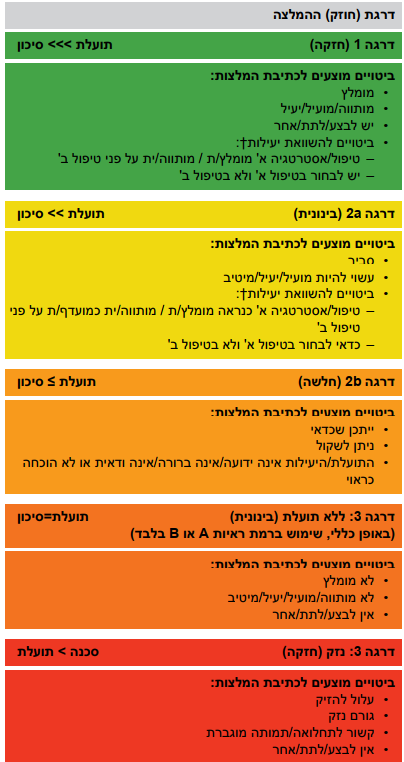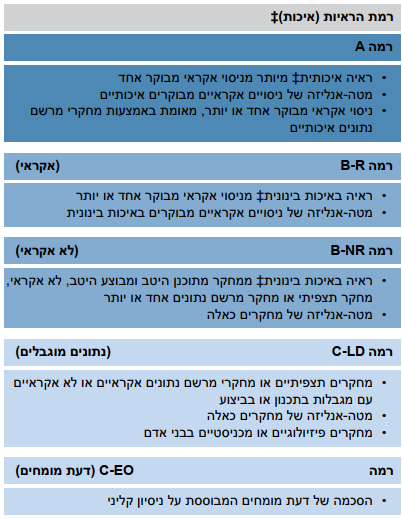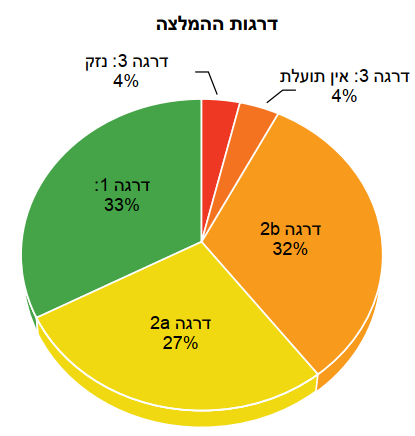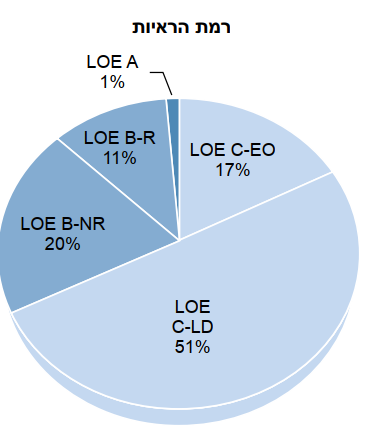החייאת לב-ריאה וטיפול קרדיווסקולרי דחוף - מבוא - Cardiopulmonary resuscitation and acute cardiovascular treatment - introduction
החייאת לב-ריאה וטיפול קרדיווסקולרי דחוף
מאת American Heart Association
לערכים נוספים הקשורים לנושא זה, ראו את דף הפירושים – החייאה
מבוא
דגשים אלו מסכמים את הסוגיות העיקריות והשינויים העיקריים בהנחיות להחייאת לב-ריאה (CPR - Cardiopulmonary Resuscitation) וטיפול קרדיווסקולרי דחוף (ECC - Extracorporeal Circulation) של (AHA) American Heart Association 2020. ההנחיות לשנת 2020 מהוות עדכון מקיף של הנחיות ה-AHA בנושאי מדעי הוראת החייאת מבוגרים, ילדים, תינוקות, יילודים ומערכות טיפול. הנחיות אלו פותחו עבור מבצעי החייאה ועבור מדריכי AHA ומטרתן להתמקד במדע ההחייאה ובהמלצות הכי משמעותיות או השנויות במחלוקת, או באלו שיגרמו לשינויים בביצוע החייאה או בהעברת הכשרה להחייאה, וכדי להסביר את הרציונל שעומד מאחורי ההמלצות.
מכיוון שפרסום זה הוא סיכום, הוא אינו מפנה למחקרים תומכים שפורסמו ולא רשומים בו דרגות המלצות (COR - Class of Recommendation) או רמות של ראיות (LOE - Level Of Evidence). למידע מפורט יותר ולהפניות, יש לעיין בהנחיות ה-AHA לשנת 2020 בנושא החייאת לב-ריאה (CPR) וטיפול קרדיווסקולרי דחוף (ECC), לרבות תקציר המנהלים[1] שפורסם בכתב העת Circulation באוקטובר 2020, והסיכום המפורט של מדעי ההחייאה שפורסם ב-International Consensus on CPR and ECC Science With Treatment Recommendations לשנת 2020, אשר פותח על-ידי ועדת הקשר הבינלאומי בנושא החייאה (ILCOR) ופורסם בו זמנית בכתבי העת Circulation[2] ו-Resuscitations באוקטובר 2020. השיטות ששימשו את ILCOR בהערכת הראיות[3] ואת ה-AHA בתרגום הערכות אלה להנחיות בנושא החייאה[4] פורסמו בהרחבה.
ההנחיות לשנת 2020 עושות שימוש בגרסה העדכנית ביותר של הגדרות ה-AHA ל-COR ול-LOE (איור 1). בסך הכל, ישנן 491 המלצות ספציפיות לגבי סעד חיים למבוגרים, ילדים, תינוקות ויילודים מדעי ההוראה בנושא החייאה ומערכות טיפול. מתוך המלצות אלו, 161 הן המלצות בדרגה 1 ו-293 הן המלצות בדרגה 2 (איור 2). בנוסף, 37 המלצות הן בדרגה 3, ובכלל זה 19 ללא ראיות לתועלת ו-18 עם ראיות לנזק.
איור 1 - הטמעה של דרגת ההמלצה ורמת הראיות לאסטרטגיות קליניות, התערבויות, טיפולים או בדיקות אבחנתיות בטיפול בחולה (עודכן במאי 2019)[5]
דרגת ההמלצה (COR) ורמת הראיות (LOE) נקבעים באופן עצמאי (ניתן לזווג כל COR לכל LOE).
המלצה עם רמת ראיות C אינה מלמדת על כך שההמלצה חלשה. רבות מהשאלות הקליניות החשובות בהן עוסקות ההנחיות אינן ניתנות לבדיקה בניסויים קליניים. אף על פי שניסויים אקראיים מבוקרים אינם זמינים, תיתכן הסכמה קלינית ברורה ביותר לכך שבדיקה מסוימת או טיפול מסוים מועילים או יעילים.
| † | כשמדובר בהמלצות השוואת -יעילות (1 COR ו-LOE A ;2a ו-B בלבד), מחקרים התומכים בשימוש בפעלים משווים צריכים לכלול השוואות ישירות של הטיפולים או האסטרטגיות הנבדקות. |
| ‡ | שיטת הערכת האיכות עודנה מתפתחת, כולל יישום של כלי דירוג ראיות מתוקננים הנמצאים בשימוש רחב ועדיף שיהיו מתוקפים; ועבור סקירות שיטתיות, הכללה של ועדה לבחינת ראיות (Evidence Review Committee). |
- COR = דרגת ההמלצה
- EO = דעת מומחה
- LD = נתונים מוגבלים
- LOE = רמת הראיות
- NR = לא אקראי
- R = אקראי
איור 2 - התפלגות דרגת ההמלצות ורמת הראיות באחוזים מתוך 491 ההמלצות בהנחיות ה-AHA בנושא החייאת לב-ריאה וטיפול קרדיווסקולרי דחוף 2020[6]
אודות ההמלצות
העובדה שרק 6 מתוך 491 מהמלצות אלה (1.2 אחוזים) מבוססות על ראיות ברמה A (לפחות מחקר קליני אקראי אחד ברמה גבוהה (RCT - Randomized Control Trial), אשר נתמך על-ידי מחקר נוסף ברמה גבוהה או על-ידי מחקר רישום (מעידים על האתגרים המתמשכים בביצוע מחקרים ברמה גבוהה בנושא החייאה. נדרש מאמץ מתואם ברמה הלאומית והבינלאומית למימון המחקר בנושא החייאה ולתמיכה בו.
הן תהליך הערכת הראיות של ILCOR והן תהליך פיתוח ההנחיות של ה-AHA מושפעים מקווי מדיניות קפדניים בנושא גילוי נאות, שנועדו להבטיח שקיפות מלאה בכל הנוגע ליחסים עם התעשייה ולניגודי עניינים אחרים, ולהגן על תהליכים אילו מהשפעות בלתי הולמות. צוות ה-AHA דאג לקבלת הצהרות גילוי ניגודי עניינים מצד כל המשתתפים. כל יושבי הראש של הקבוצות לכתיבת ההנחיות ולפחות 50 אחוזים מחברי קבוצות אלה נדרשים להיות חופשיים מכל ניגוד עניינים, וכל הקשרים הרלוונטיים נחשפים בפרסומי ה-Consensus on Science With Treatment Recommendations ובפרסומי ההנחיות בהתאמה.
מקורות
Merchant RM, Topjian AA, Panchal AR, et al. Part 1: executive summary: 2020 American Heart Association Guidelines Update for .1 .Cardiopulmonary Resuscitation and Emergency Cardiovascular Care. Circulation. 2020;142)suppl 2(:In press International Liaison Committee on Resuscitation. 2020 International Consensus on Cardiopulmonary Resuscitation and .2 .Emergency Cardiovascular Care Science With Treatment Recommendations. Circulation. 2020;142)suppl 1(:In press International Liaison Committee on Resuscitation. 2020 International Consensus on Cardiopulmonary Resuscitation and .3 .Emergency Cardiovascular Care Science With Treatment Recommendations. Resuscitation. 2020:In press Morley P, Atkins D, Finn JM, et al. 2 Evidence-evaluation process and management of potential conflicts of interest: 2020 .4 International Consensus on Cardiopulmonary Resuscitation and Emergency Cardiovascular Care Science With Treatment .Recommendations. Circulation. 2020;142)suppl 1(:In press Magid DJ, Aziz K, Cheng A, et al. Part 2: evidence evaluation and guidelines development: 2020 American Heart Association .5 Guidelines Update for Cardiopulmonary Resuscitation and Emergency Cardiovascular Care. Circulation. 2020;142)suppl 2(:In .press Sawyer KN, Camp-Rogers TR, Kotini-Shah P, et al; for the American Heart Association Emergency Cardiovascular Care .6 Committee; Council on Cardiovascular and Stroke Nursing; Council on Genomic and Precision Medicine; Council on Quality of Care and Outcomes Research; and Stroke Council. Sudden cardiac arrest survivorship: a scientific statement from the American Heart Association. Circulation. 2020;141:e654-e685. doi: 10.1161/CIR.0000000000000747 Jeejeebhoy FM, Zelop CM, Lipman S, et al; for the American Heart Association Emergency Cardiovascular Care Committee, .7 Council on Cardiopulmonary, Critical Care, Perioperative and Resuscitation, Council on Cardiovascular Diseases in the Young, and Council on Clinical Cardiology. Cardiac arrest in pregnancy: a scientific statement from the American Heart Association. Circulation. 2015;132)18(:1747-1773. doi: 10.1161/CIR.0000000000000300 Berg RA, Sutton RM, Reeder RW, et al; for the Eunice Kennedy Shriver National Institute of Child Health and Human Development .8 Collaborative Pediatric Intensive Care Quality of Cardio-Pulmonary Resuscitation Investigators. Association between diastolic blood pressure during pediatric in-hospital cardiopulmonary resuscitation and survival. Circulation. 2018;137)17(:1784-1795. doi: 10.1161/CIRCULATIONAHA.117.032270 Wilson N, Kariisa M, Seth P, Smith H IV, Davis NL. Drug and opioid-involved overdose deaths—United States, 2017-2018. mmWR .9 Morb Mortal Wkly Rep. 2020;69)11(:290-297. doi: 10.15585/mmwr.mm6911a4 Dezfulian, et al. Opioid-associated out-of-hospital cardiac arrest: distinctive clinical features and implications for healthcare and .10 .public responses: a scientific statement from the American Heart Association. Circulation. 2020:In press Maron BJ, Udelson JE, Bonow RO, et al. Eligibility and disqualification recommendations for competitive athletes with .11 cardiovascular abnormalities: task force 3: hypertrophic cardiomyopathy, arrhythmogenic right ventricular cardiomyopathy and other cardiomyopathies, and myocarditis: a scientific statement from the American Heart Association and American College of Cardiology. Circulation. 2015;132)22(:e273-e280. doi: 10.1161/cir.0000000000000239 Maron BJ, Doerer JJ, Haas TS, Tierney DM, Mueller FO. Sudden deaths in young competitive athletes: analysis of 1866 deaths in .12 the United States, 1980-2006. Circulation. 2009;119)8(:1085-1092. doi: 10.1161/CIRCULATIONAHA.108.804617 Fung G, Luo H, Qiu Y, Yang D, McManus B. Myocarditis. Circ Res. 2016;118)3(:496-514. doi: 10.1161/CIRCRESAHA.115.306573 .13 Marino BS, Tabbutt S, MacLaren G, et al; for the American Heart Association Congenital Cardiac Defects Committee of the .14 Council on Cardiovascular Disease in the Young; Council on Clinical Cardiology; Council on Cardiovascular and Stroke Nursing; Council on Cardiovascular Surgery and Anesthesia; and Emergency Cardiovascular Care Committee. Cardiopulmonary resuscitation in infants and children with cardiac disease: a scientific statement from the American Heart Association. Circulation. 2018;137)22(:e691-e782. doi: 10.1161/CIR.0000000000000524 Oster ME, Lee KA, Honein MA, Riehle-Colarusso T, Shin M, Correa A. Temporal trends in survival among infants with critical .15 congenital heart defects. Pediatrics. 2013;131)5(:e1502-e1508. doi: 10.1542/peds.2012-3435 Abman SH, Hansmann G, Archer SL, et al; for the American Heart Association Council on Cardiopulmonary, Critical Care, .16 Perioperative and Resuscitation; Council on Clinical Cardiology; Council on Cardiovascular Disease in the Young; Council on Cardiovascular Radiology and Intervention; Council on Cardiovascular Surgery and Anesthesia; and the American Thoracic Society. Pediatric pulmonary hypertension: guidelines from the American Heart Association and American Thoracic Society. Circulation. 2015;132)21(:2037-2099. doi: 10.1161/CIR.0000000000000329 JN-1077 10/20 למידע נוסף על תוכניות קורסים מצילי חיים של American Heart Association, ניתן ליצור איתנו קשר ב: international.heart.org J Amerk I Heart F Assoc i 2020 CPR & ECC GUIDELINES 7272 Greenville Avenue Dallas, Texas 75231-4596, USA www.heart.org
הערות שוליים
- ↑ שגיאת ציטוט: תג
<ref>לא תקין; לא נכתב טקסט עבור הערות השוליים בשםהערה1 - ↑ שגיאת ציטוט: תג
<ref>לא תקין; לא נכתב טקסט עבור הערות השוליים בשםהערה2 - ↑ שגיאת ציטוט: תג
<ref>לא תקין; לא נכתב טקסט עבור הערות השוליים בשםהערה4 - ↑ שגיאת ציטוט: תג
<ref>לא תקין; לא נכתב טקסט עבור הערות השוליים בשםהערה5 - ↑ יש לציין את התוצא או התוצאה של ההתערבות (תוצא קליני משופר או דיוק גבוה יותר באבחנה או מידע פרוגנוסטי תוספתי).
- ↑ התוצאות הן האחוז מתוך 491 ההמלצות לסעד חיים בסיסי ומתקדם למבוגרים, סעד חיים בסיסי ומתקדם לילדים ותינוקות, לסעד חיים ליילודים, מדעי הוראת החייאה ומערכות טיפולי


 כניסה
כניסה  עקבו אחרינו בפייסבוק
עקבו אחרינו בפייסבוק 



